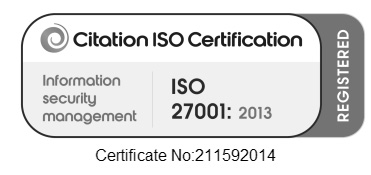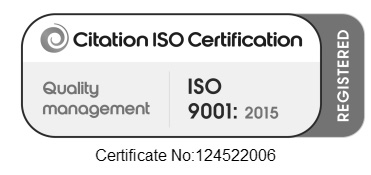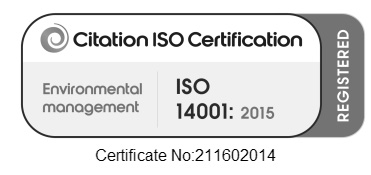Central recently spoke to Umi about how to optimise your IT set-up for long-term remote working.
If you missed it, you can read the blog below or visit the original article here.
It is no secret that workplaces have undergone massive changes since the onset of the pandemic in March 2020.
As many businesses made the shift from in-office to home working, this saw technology adoption rates soar, along with the surge in usage of video-conferencing tools such as Microsoft Teams and Zoom. And this trend is showing no sign of slowing down.
While some companies are transitioning back to office-based working, many are continuing with a more flexible, hybrid model – giving staff the choice around both when and where they work.
Mike Dunleavy, client director at IT solutions provider Central, shares some insight into how firms can effectively plan their IT infrastructure to support post-Covid working practices.
Do not skip the research phase
First and foremost, in order for business leaders to get a grasp on where their organisation currently is in its IT journey, some initial ‘digging’ and fact-finding needs to be planned in.
Regardless of whether employees are logging on from the office or at home, it is imperative that the user experience is the same. So, whether that is accessing internal systems, saving important files, or hopping on a video call, there should not be any friction that prevents personnel from being able to carry out their job.
But in order to be able to implement such a seamless experience, companies first need to obtain an accurate picture of what infrastructure they currently have, what works well and what needs improving – along with what the end-goal looks like.
And this is where the proverb ‘fail to prepare and prepare to fail’ has never been more appropriate.
Decision-makers therefore need to conduct a ‘state of the nation’ style survey about their workforce’s biggest pain-points – asking staff who use the systems on a daily basis what issues they face or where they need additional support, to be able to carry out their role effectively. It is only once this background research has been conducted that an appropriate solution can be designed and deployed.
It is important not to overlook the individual needs and requirements of each staff member too – especially when remote working, as each person’s home set-up will be different.
As part of the initial assessment stage, areas to consider are how much hardware or software is essential, what tasks staff need to carry out, who needs access to the technology and during what time frames.
This process could help to uncover, for example, that the business’s existing laptops’ operating systems are not up to date and do not have a fast enough processor to be able to cope. Or alternatively, it could highlight growing staff frustrations because of slow Wi-Fi connectivity – either way, it is vital to uncover the good, bad, and ugly right at the start, as if not, this will cost more in time, money, and employee dissatisfaction in the long run.
Prioritise security
A recent survey conducted by 451 Research revealed that 47% of businesses have reported an uplift in the severity and volume of cyber-attacks in the last 12 months, and 82% remain concerned around the security risks of remote working.
While anxiety about cyber-security is nothing new per se, the rise in home-working has undoubtedly hurled this topic further into the spotlight.
Therefore, as we look ahead to the world of work post-pandemic, as part of any IT infrastructure planning, decision-makers should – like with their hardware and software – review the measures they currently have in place. IT teams should be on the button when it comes to ensuring that all security elements – such as antivirus and web filtering – are installed across all devices.
If hybrid, work from home, and work from anywhere models are introduced, seamless mobile device management measures are crucial, as this will allow tech teams to access off-premises devices – ensuring all web policies, software upgrades, and security patches are kept routinely up to date.
While most organisations are familiar with the terminology ‘data breach’ and ‘cyber incident’, no one wants to have to experience this first-hand. Therefore, being able to keep networks protected against online criminals should be as easy as possible priority for IT admins – no matter where staff are located.
As well as device management planning, secure infrastructure should also comprise multi-factor authentication processes, alongside arranging regular security training sessions to help upskill staff in how to identify new and emerging threats.
An increasing trend among businesses is sending engineered phishing emails to the team, to evaluate how well the organisation would cope in the event of a real-life breach. Solutions exist which report how many clicks there were, and team leaders can then utilise these findings to organise virtual training courses.
Keep communication flowing
Throughout the various lockdowns and social-distancing restrictions, technology has greatly helped companies to communicate and collaborate – and when supporting post-Covid working practices, its role is equally important.
Not being in the office every day – or travelling to and from client meetings – means that employees need a robust and reliable system that enables them to deliver projects and build relationships with staff and customers, without coming up against any technical hurdles.
Therefore, when compiling any successful IT roadmap, business leaders needs to assess their unified communication and collaboration needs, and implement tools – like Microsoft Teams, Zoom, and Google Meet – to complement and streamline existing workflows and communication methods.
And whatever the individual needs of the organisation, in order for any platform to work well, it needs to integrate seamlessly into business operations and empower personnel within their roles.
Consider the cloud
For many companies, digital transformation has been accelerated over the past year – with organisations rushing to implement ‘quick fix’ solutions that would enable operations to continue smoothly when office buildings were closed down.
But over the last few months, businesses have been reassessing those ‘knee jerk’ investments and sense-checking what they really need – and this forms a pivotal part of the long-term IT puzzle.
For many, the shift from on-premise to cloud infrastructure has been the biggest change, and as we look ahead to the future of hybrid working, cloud adoption is expected to continue growing exponentially.
If businesses require their staff – no matter their location or flexible working schedule – to have 24/7 access to corporate drives, migration to the cloud is an important consideration that should not be overlooked.
The cloud also offers scalability in line with a business’s fluctuating demands. And as a people join and leave the team, and have different home tech set-ups and requirements, this can not only put more pressure on security but also the capacity of the server, storage medium, and network. The cloud therefore allows senior decision-makers to adapt and change their IT infrastructure in line with their firm’s evolving needs.
Align IT with business objectives
One of the biggest mistakes business leaders often commit is not recognising the vital role IT plays within the wider corporate strategy – and excluding it from the decision-making process.
It should never be an afterthought and should always work in tandem with other goals across the organisation. This rings truer more than ever with post-Covid practices looking ever-more remote and hybrid – in fact, a survey by Robert Half has uncovered that 89% of UK businesses expect hybrid working practices to become permanent.
Ultimately, the assessment of ‘where are we now?’ is at the cornerstone of every comprehensive and successful IT infrastructure plan. Companies should never ignore the value to be gleaned from evaluating their assets, systems, and processes – as well as unearthing the current challenges and pain-points from internal feedback.
It is only when this happens that enterprises can work with their IT teams to design and deploy tech solutions that deliver a positive user experience and drive business growth forward not just in the present but well into the future.






